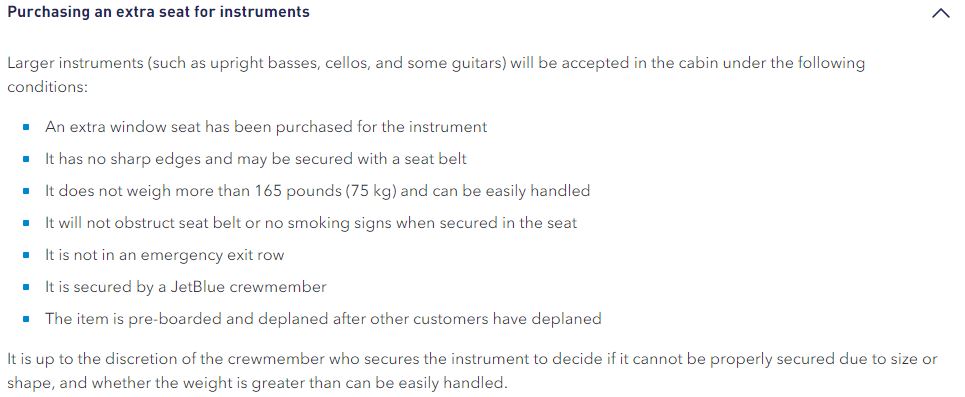Can you bring your instrument on a plane? Absolutely!
Flying with your musical instrument can be stressful, unless you are prepared! Here’s a checklist to make sure your flight with your musical instrument is as successful as possible:
- Check your airline’s musical instrument policy.
- Protect your instrument, and the other passengers with a case or cover for your instrument.
- Measure the size and weight of your musical instrument with the case on.
- Insure your instrument. Take pictures and write detailed descriptions of the instrument before you fly.
- Inspect your instrument before you leave the destination airport. Take any pictures of damage done and report it to your insurance agent immediately.

Check Your Airline’s Musical Instrument Policy
If you are traveling with a musical instrument, you will want to be aware of the musical instrument policy of the airline you are flying with. Make sure you aren’t caught unawares when you bring your instrument with you to the airport!
You will likely have three options for traveling with your instrument:
- You can carry-on your instrument, if it fits in the overhead bin area or under the seat
- You may purchase a cabin seat for your instrument (you will want to check with your airline to see what restrictions there are with that)
- You may check your instrument as long as it doesn’t exceed the dimensions of your airline carrier.
Check with your personal airline’s musical instrument policy to see what options you have available to you:
Alaska Air Policy for Musical Instruments
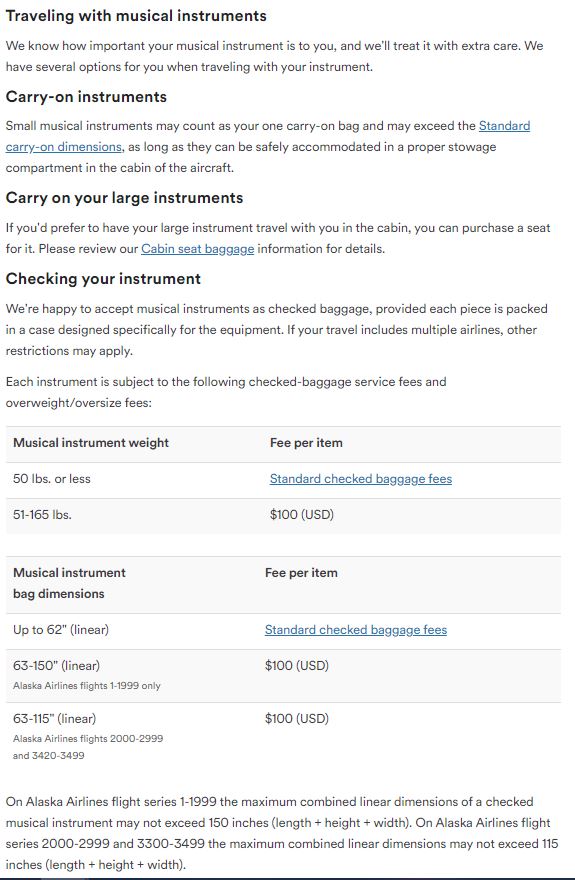
Alaska Air Musical Instrument Policy
Please visit Alaska Air Musical Instrument Policy for the full policy and for updates.
Allegiant Air Policy for Musical Instruments

Allegiant Air Contract of Carriage
Please visit Allegiant Air Contract of Carriage for the full policy and for updates.
American Airlines Policy for Musical Instruments

American Airlines Musical Instrument Policy
Please visit American Airlines Musical Instrument Policy for the full policy and for updates.
Delta Airlines Policy for Musical Instruments
Note: Overhead bin size for Delta is 9″ x 14″ x 22 in”
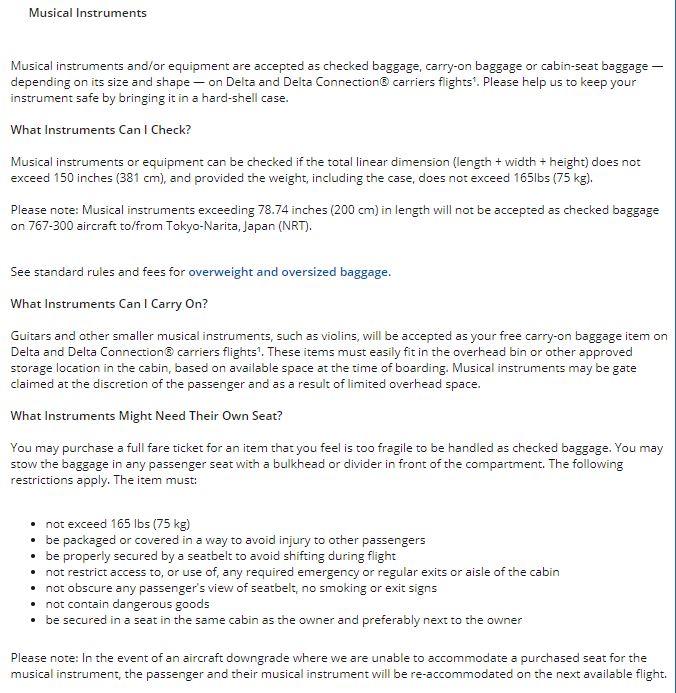
Delta Airlines Musical Instrument Policy
Please visit Delta Airlines Musical Instrument Policy for the full policy and for updates.
Frontier Airlines Policy for Musical Instrument
Note: Frontier Airlines carry on bag max dimensions are 10″ x 16″ x 24″
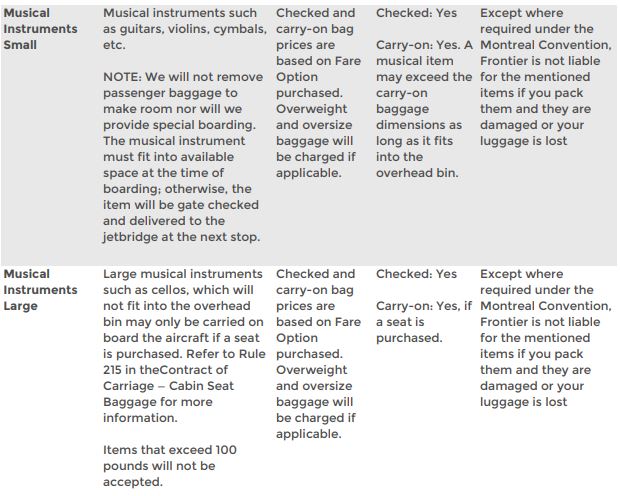
Frontier Airlines Musical Instrument Policy
Please visit Frontier Airlines Musical Instrument Policy for the full policy and for updates.
Hawaiian Airlines Policy for Musical Instruments
Musical Instrument Carry on for Hawaiian Airlines:

Hawaiian Airlines Contract of Carriage Policy
Please visit Hawaiian Airlines Contract of Carriage Policy for the full policy and for updates.
Musical Instrument Checked Baggage for Hawaiian Airlines:
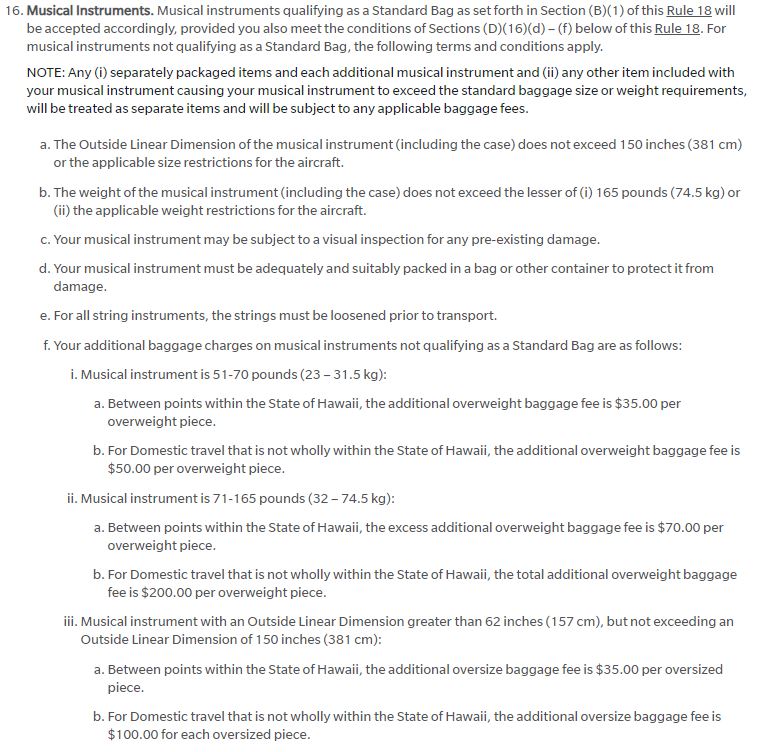
Hawaiian Airlines Checked Baggage Policy
Please visit Hawaiian Airlines Checked Baggage Policy for the full policy and for updates.
JetBlue Policy for Musical Instruments
Southwest Airlines Policy for Musical Instruments
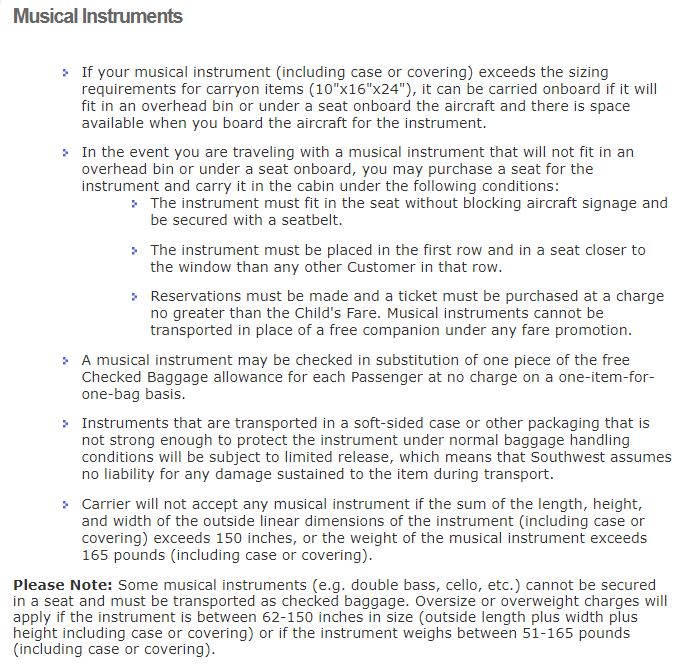
Southwest Airline Musical Instrument Policy
Please visit Southwest Airlines Musical Instrument Policy for the full policy and for updates.
Spirit Airlines Musical Instrument Information
Note: carry on max dimensions for Spirit Airlines is 22″ x 18″ x 10″

Spirit Airlines Musical Instrument Information
Please visit Spirit Airlines Musical Instrument Info for their full policy and for updates.
United Airlines Policy for Musical Instruments
Note: overhead bin size for United Airlines is 9″ x 14″ x 22 in”
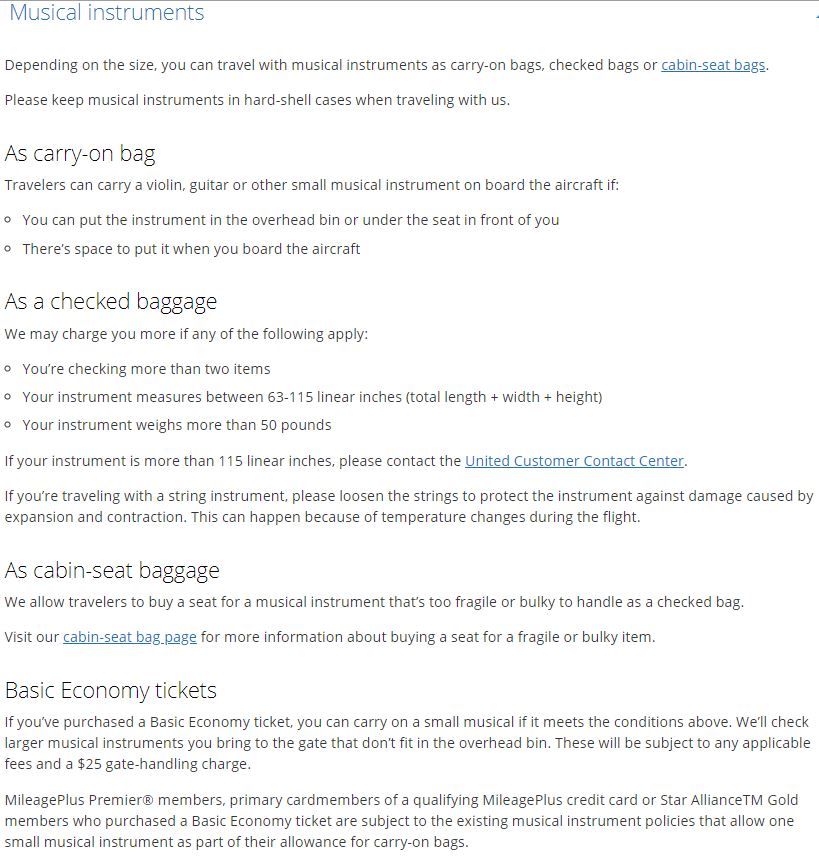
United Airline Musical Instrument Policy
Please visit United Airlines Musical Instrument Policy for the full policy and for updates.
Keep Your Instrument Protected
In all cases, you will want to make sure you can keep your instrument protected. The last thing you will want is to have your instrument damaged! And you also want to keep other passenger’s protected. So you will want a case or cover. Some airlines require a hard case, so you will want to check with that.
The best way to keep your instrument safe would be to carry it on the plane with you. The person who is going to care for it the best will be yourself. Having it right by your side the whole time will ensure that, it that is at all possible.
You will want your instrument to be in a hard case. Make sure your instrument is well cushioned and okay even with a little bit of jostling. Your instrument will likely have some jostling around as you will be in tight quarters with a lot of people.
Carry as little as you need to. Just keep the essentials with you – your instrument and one other personal item. Limit the number of carry on packages you have so you can focus on your instrument and keeping it protected.
Take out the other accessories in the case, and remove any liquids within it as well.
Loosen the strings of your instrument to help ease tension for fluctuations of air temperature, humidity, and air pressure.
Measure the size and weight of your musical instrument with the case on.
Make sure that you have the exact dimensions of the size and weight of your instrument. A lot of carriers will want to know the linear dimensions. What that means is to measure the length, width, and height of the instrument and add them to together. This becomes your linear dimensions.
Insure Your Instrument
You may be interested in insuring your instrument, which would be a good precaution especially when you travel!
Some airlines will not be liable for any damage done to the musical instrument on a domestic trip. But if you are flying internationally, “airlines are prohibited by treaty from disclaiming liability for baggage that they carry” (as quoted from Air Travel Tips for Instrumental Musicians Handbook produced by the American Federation of Musicians in collaboration with the National Musical Instrument Carry-on Coalition).
Your instrument may be covered under your homeowner’s or renter’s insurance. Check with your agent to see what coverage you have available.
What if I have a problem?
You can do all that you can to make sure things go smoothly, though you may still run into a problem. Whatever happens, remain calm. Ask to speak to a customer service supervisor.
When you arrive to your destination, inspect your instrument carefully and make sure that everything is in order. You can report a violation of airline policy to the airport if something comes up. If your instrument has damage, then report that to the airline as well before you leave.
If you instrument is damaged, insurance will want to see pictures. Make sure you report that damage immediately and your agent can walk you through what they will need next.
Additional Website Sources:
- Airlines for America Overview of Airline Policies
- TSA Tips for Flying with Musical Instruments
- DOT Flying with Musical Instruments
- Filing a Complaint with an Airline
- Air Travel Tips for Instrumental Musicians Handbook
Tel loves her life as a piano player, a piano teacher, and a mom. Amid piano blogging, piano teaching, and piano playing, she loves a chance to fit in a good exercise class, volunteer at her kids’ school and at her church, and go on long dates with her husband. Full bio at About Tel.



